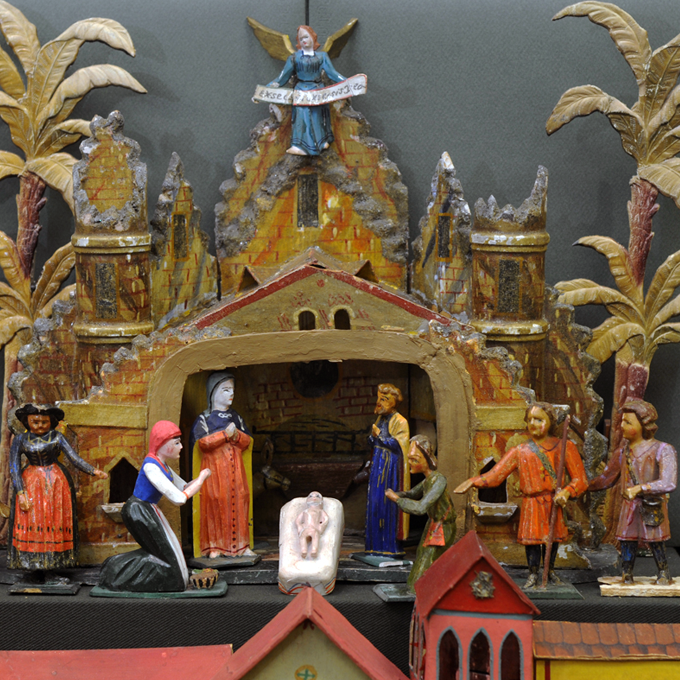Czech Republic
Czech Republic
The following Nativities are each displayed in a unique permanent setting created by Marian Library Crèche Collection volunteers. The descriptive text for each was written by Father Johann Roten, S.M.
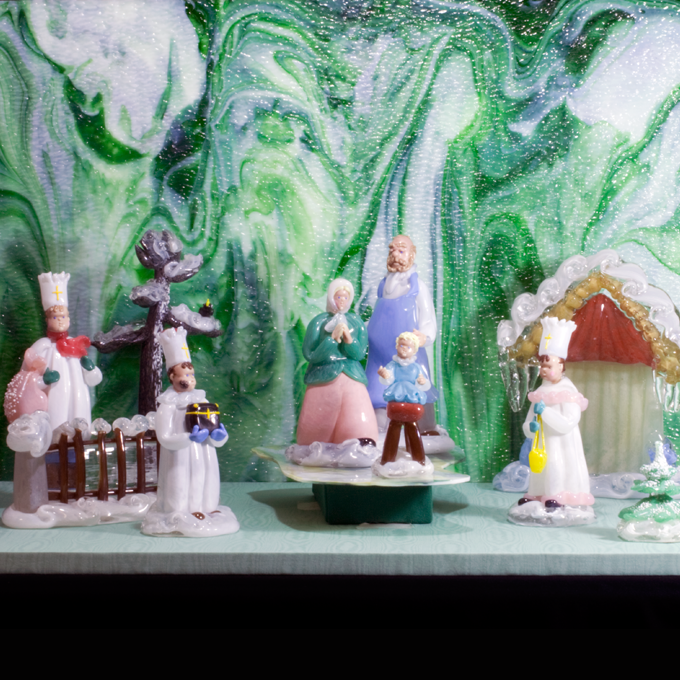
God Sends Meat
Unknown artist
Not to be taken too seriously...and no pun intended. However, the Nativity story frequently evolves against the titanic struggle between God and devil, good and evil. It is not rare to see a devil in Nativity scenes, especially in the Latin traditions. So when God sends meat, the devil sends cooks? Is this the meaning of this set? But the cooks are not mandated to wreak havoc. They are bringing gifts. Are we dealing with recycled devils, converted and put to service of the Christ Child? It would seem to because even the innkeeper - look at the generous bulge of his blue apron - looks like a secularized Joseph, and Mary like the pious version of his wife. Rewriting the Christmas story with a smiling twinkle in his eye, the unknown artist shortens the history of salvation to the Christmas event, and thus becomes an invitation to early conversion.
– MLA.446
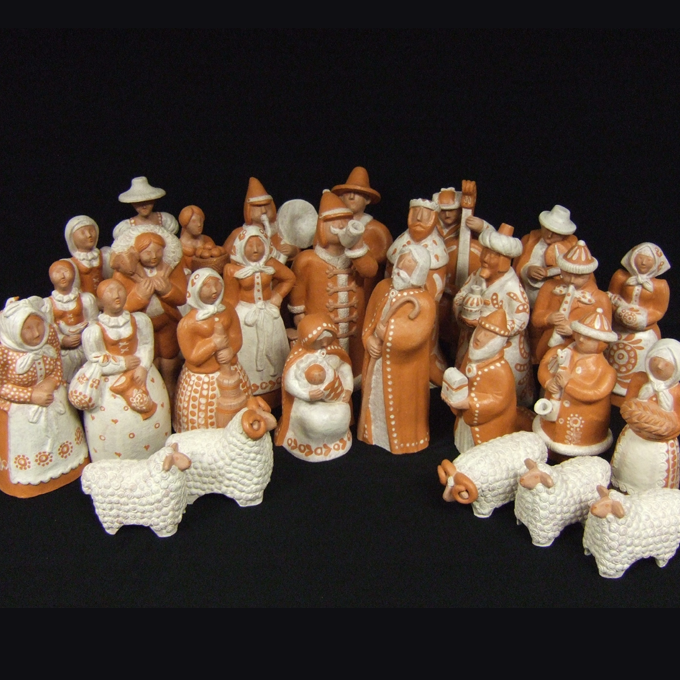
He Always Comes Our Way
Martin Alena Raboch
Yes, this is an important part of the Christmas message. He came, and always comes our way. And he is not alone. With him come all those he once met and drew to himself. Together with him they form a long and age-old procession, the people of God on the march. They come in our direction. Not only Jesus, but all those he loves and who love him. They want to meet. They want us to join. This nativity set would like to express the idea of the pilgrim people of God. At first glance no more than a beautiful mass of orange and white colors, familiar figures reveal themselves gradually to those who take a closer look. There is Mary holding the Child and marching in the first row, Joseph slightly behind them, the night watchman announcing with his horn the hour of salvation, the lady with the goose, one making butter, others carrying a variety of delicious breads, not to forget the many musicians. The magi have joined the procession. They are part of the people, mixing in with sheep and shepherds.
– ML.0251.03
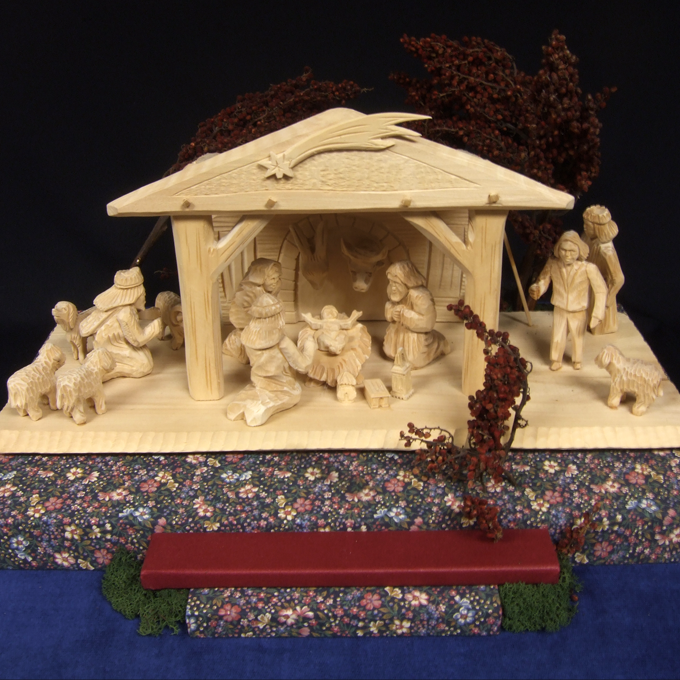
Illumination in Wood
Jan Rejman
This elaborately carved piece of sixteen figures is set in and around a stable of humble style and modest proportions. Open on three sides and supported in front by two posts, the structure bears resemblance to the refuge where the future founders of Rome had spent their early childhood. The stable is indeed one of the many variations of the tugurium. But it presents an important difference. The back of the hut is constituted by a solid wall on which like hunter's trophies the heads of ox and donkey have been fixed. The feature is well known in medieval illumination where economy of space was of the essence. But so are the two animals. They have been a permanent fixture of the nativity depiction from the beginning of the second or third century on. Their presence, however reduced, appeases the baby's fears. On the threshold of conscious humanness, he is close to the reassuring world of animals.
– ML.1119.24
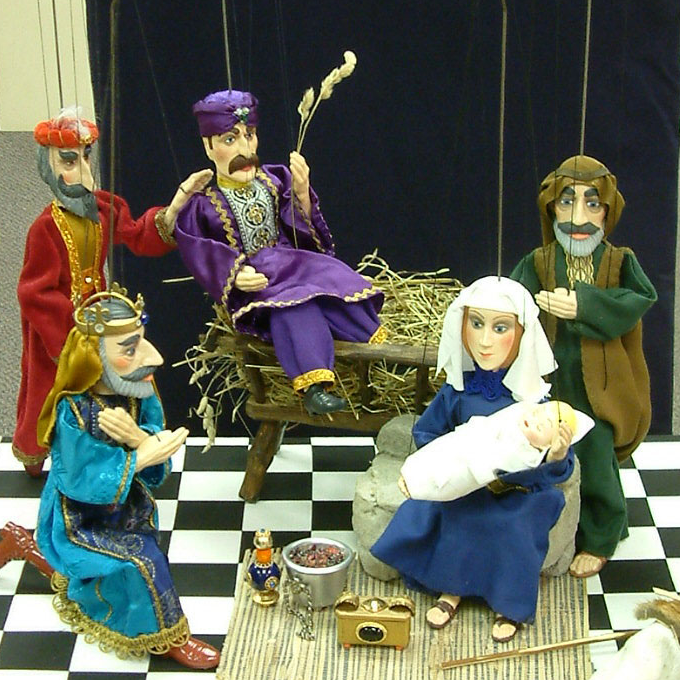
String Pullers (Marionettes)
Jerzji Klubek
Marionettes are witnesses of ancient and universal culture. Known to Aristotle and Plato as “neurospasta,” they were called “sutradhara” or stringpuller in the Indian world. Archimedes is said to have worked with marionettes. They were used to present the Iliad and Odyssey. The Christian world inherited puppetry from Roman theater tradition and medieval Italy. It is believed that the word marionette originated from little figures of the Virgin Mary or “Marydolls.” Marionettes are precursors of the nativity set or crèche. They were used in morality plays and mysteries, for example, in the Shepherds’ play of Rouen (11th c), the Herods’ and Three-Kings’ plays in the German medieval tradition (13th c), and the long and noted theater tradition of Dieppe (France, 1443-1647). Well-known are the Sicilian and Czech marionettes, as well as the Sartor Theater of Marionettes in Augsburg (until 1803).
This set is a reminiscence of this rich and varied tradition. It is also a reminder of human playfulness and the always latent temptation to recreate the world in his image and measure.
– ML.1123.01
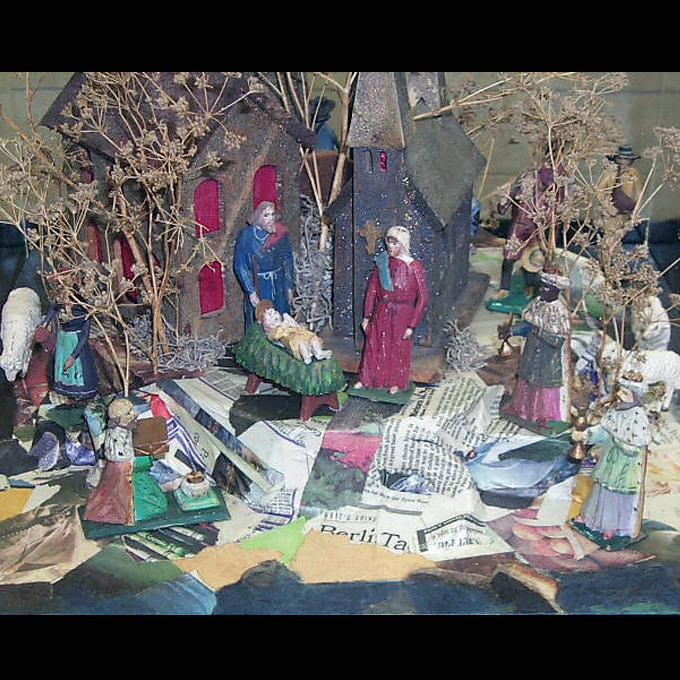
Braving the Times
Unkown srtist
The wood-carved figures of this set by an unknown artist can be dated to the middle of the nineteenth century. They have been successfully braving the wear and tear of time, losing none of their simple and moving beauty. Set on a collage of recent newspapers, they express this unassuming but lasting truth: news comes and goes
– ML.2637
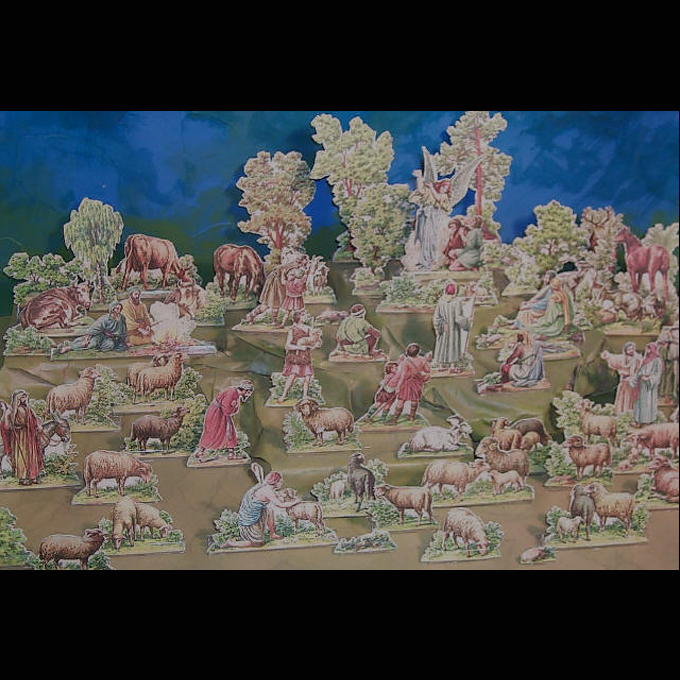 – ML.2646a
– ML.2646a
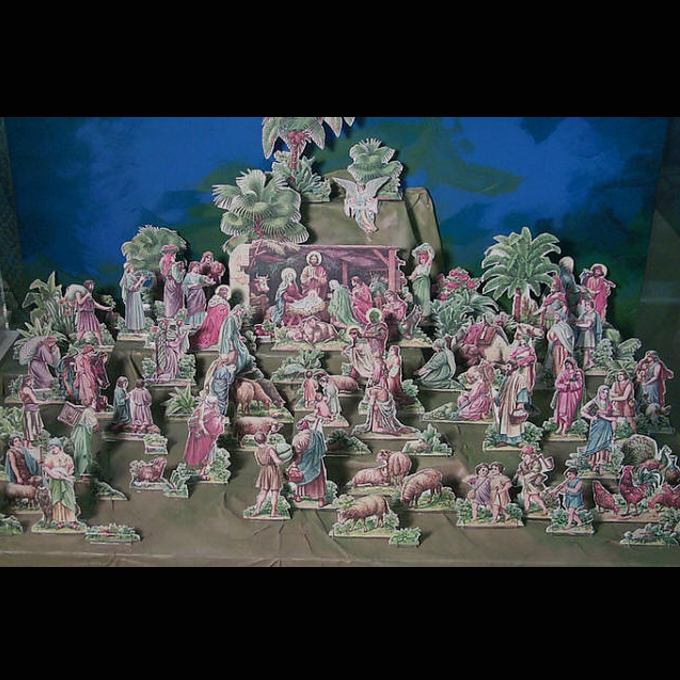 – ML.2646b
– ML.2646b
The Nativity of the Pauper
Pavel Korber (1862-1925)
These cutout nativities of 165 pieces by Pavel Korber were published in 1933 by Umelecky Ustav Litograficky (Prague). Very popular at the turn of last century, the imagery was influenced by nineteenth century Bible illustrations à la Tissot and Doré. The overall style beckons to the orientalist tendencies of the times. Colorful and affordable, these cutout nativities were called "crèches of the poor."
– ML.2646a, ML.2646b

